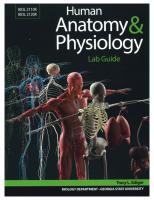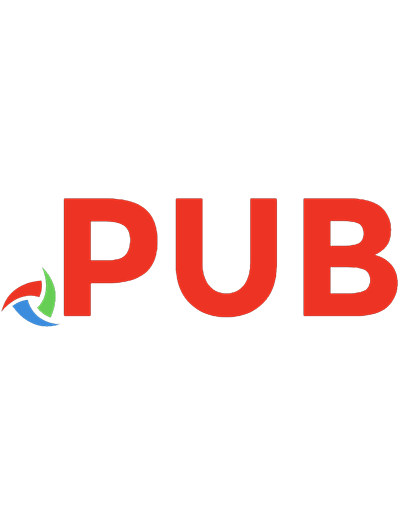Human Physiology in Extreme Environments [2 ed.] 9780128159422
Human Physiology in Extreme Environments, Second Edition, offers evidence on how human biology and physiology is affecte
875 168 23MB
English Pages 374 [369] Year 2020
Table of contents :
Title-page_2021_Human-Physiology-in-Extreme-Environments
Human Physiology in Extreme Environments
Copyright_2021_Human-Physiology-in-Extreme-Environments
Copyright
Contents_2021_Human-Physiology-in-Extreme-Environments
Contents
List-of-contributors_2021_Human-Physiology-in-Extreme-Environments
List of contributors
Preface_2021_Human-Physiology-in-Extreme-Environments
Preface
References
Chapter-1---Introduction_2021_Human-Physiology-in-Extreme-Environments
1 Introduction
1.1 Universe
1.2 Galaxies
1.3 Planetary system
1.4 Earth–Moon system
1.4.1 Origin of the Earth–Moon system
1.4.1.1 Fission hypothesis
1.4.1.2 Lunar capture hypothesis
1.4.1.3 Coaccretion hypothesis
1.4.1.4 Giant impact hypothesis
1.4.2 Earth–Moon system and development of life on Earth
1.4.3 Earth
1.5 Life
1.5.1 Paleontological aspects
1.5.1.1 First life forms
1.5.2 Anthropological aspects
1.5.2.1 The origin of primates
References
Chapter-2---Methodology_2021_Human-Physiology-in-Extreme-Environments
2 Methodology
2.1 Introduction
2.2 Historical aspects
2.3 Accelerating growth of technology
2.4 Characteristics of mobile technologies for field use
2.5 Smart devices
2.5.1 Circadian rhythm in extreme environments
2.5.1.1 Recording core body temperature
2.5.1.2 Ingestible temperature capsule
2.5.1.3 A noninvasive heatflux sensor
2.5.1.4 Core body temperature—role of masking effects and how to account for them
2.5.1.5 Activity, sleep, and light spectrum recordings
2.5.2 Fatigue and cognitive performance
2.5.2.1 Mental workload, vigilance, and cognitive performance
2.5.2.2 Mobile electroencephalogram—present challenges and promises
2.6 Outlook
References
Chapter-3---Exercise-physiology_2021_Human-Physiology-in-Extreme-Environment
3 Exercise physiology
3.1 Introduction
3.2 Physical principles
3.3 Ergometry
3.4 Energy expenditure
3.4.1 Indirect calorimetry
3.4.2 Metabolic equivalent and oxygen consumption
3.4.3 Energy efficiency
3.5 V≐̸O2max
3.6 Energy sources and storage
3.7 Musculature
3.7.1 Fiber types
3.8 Energy and exercise intensity
3.9 Lactate threshold
3.10 Oxygen supply
3.10.1 Respiration
3.10.2 Blood transport
3.10.3 Cardiac output and blood distribution
3.10.4 Fick’s principle
3.10.5 Excess postexercise oxygen consumption
3.11 Strength
3.12 Training
3.13 Sport, health, and evolutionary aspects
References
Further reading
Chapter-4---Pressure-environment_2021_Human-Physiology-in-Extreme-Environmen
4 Pressure environment
4.1 The hypobaric environment
4.1.1 Introduction
4.1.1.1 Historical aspects
4.1.1.2 Geographical aspects
4.1.1.3 Gases in our atmosphere
4.1.2 Physiology
4.1.2.1 Intermittent hypoxia and high-altitude training
4.1.2.2 Intermittent hypoxia and occupational health
4.1.2.3 Pathophysiology
4.1.3 Altitude diseases
4.1.3.1 High-altitude headache
4.1.3.2 Acute mountain sickness
4.1.3.3 High-altitude pulmonary edema
4.1.3.4 High-altitude cerebral edema
4.2 The hyperbaric environment
4.2.1 History
4.2.2 Gas laws
4.2.2.1 The ideal gas law and its counterparts
4.2.2.2 The law of Henry
4.2.3 Comparative physiology
4.2.4 Mammalian diving reflex
4.2.5 Humans in the hyperbaric environment
4.2.5.1 Sensory systems
4.2.5.2 Apnea diving in humans
4.2.5.3 Scuba diving
4.2.5.3.1 Equipment
4.2.5.3.2 Technical diving
4.2.5.3.3 Saturation diving
4.2.5.3.4 Gases used for diving
4.2.5.3.4.1 Air
4.2.5.3.4.2 Nitrox (also enriched air nitrogen)
4.2.5.3.4.3 Trimix
4.2.5.3.4.4 Heliox
4.2.5.3.4.5 Hydrox
4.2.5.3.4.6 Argon
4.2.6 Diseases related to exposure to the hyperbaric environment
4.2.6.1 Barotrauma
4.2.6.2 Nitrogen narcosis—rapture of the deep
4.2.6.3 Decompression injury
4.2.6.3.1 Decompression injury
4.2.6.3.2 Open foramen ovale
4.2.6.3.3 Cerebral arterial gas embolism
4.2.6.4 Oxygen toxicity
4.2.6.5 High-pressure nervous syndrome
4.2.7 Treatment
References
Chapter-5---Desert-and-tropical-envir_2021_Human-Physiology-in-Extreme-Envir
5 Desert and tropical environments
5.1 Introduction
5.2 Thermal balance
5.2.1 Ectothermic and endothermic metabolism
5.2.2 Neutral temperature zone
5.3 Heat production
5.3.1 Metabolic heat production and metabolic rate
5.3.2 Thermal balance under different physical and environmental settings
5.3.3 Influencing factors
5.4 Methodologies of core body temperature measurement
5.5 Basics of heat transfer
5.5.1 Internal heat transfer
5.5.2 External heat transfer
5.5.2.1 Convection
5.5.2.1.1 Natural convection
5.5.2.1.2 Forced convection
5.5.2.2 Conduction
5.5.2.3 Radiation
5.5.2.4 Evaporation
5.5.2.4.1 Perspiratio insensibilis
5.5.2.4.2 Perspiratio sensibilis
5.6 Thermoregulation
5.6.1 Cardiovascular regulation
5.6.2 Water/salt homeostasis
5.7 Special temperature regulation
5.7.1 Heat production during physical work
5.7.2 Heat loss
5.7.3 Age-dependent temperature regulation
5.8 Adaptation, acclimatization, acclimation, and habituation
5.8.1 Definitions
5.8.2 Special adaptations
5.8.2.1 Adaptation of behavior
5.8.2.2 Torpor, hibernation, and estivation
5.9 Hyperthermia and fever
5.9.1 Hyperthermia
5.9.1.1 Pathophysiology
5.9.1.2 Heat cramps
5.9.1.3 Heat collapse
5.9.1.4 Heat stroke
5.9.1.5 Preventions
5.9.2 Fever
5.10 Thermoregulation and climate
5.10.1 Definitions
5.10.1.1 Atmosphere, climate, weather, microclimate
5.10.1.2 Climate indices
5.11 Outlook: global warming and human health
5.12 Summary
References
Chapter-6---Cold-environments_2021_Human-Physiology-in-Extreme-Environments
6 Cold environments
6.1 Introduction
6.2 Arctic regions
6.2.1 The Yukon Arctic Ultra
6.2.2 Study design
6.2.3 Results and discussion
6.2.3.1 Anthropometric data
6.2.3.2 Energy expenditure
6.2.3.3 Body composition
6.2.3.4 Sleep parameters
6.2.3.5 Heart rate variability
6.2.4 Limitations
6.3 Antarctic regions
6.3.1 Introduction
6.3.1.1 Antarctica: geological, climatic, and historical background
6.3.1.2 Antarctica: Discovery and settlement
6.3.1.3 Antarctica: German research stations
6.3.1.3.1 Georg-von-Neumayer stations
6.3.1.4 Environments like the antarctic as space analogues
6.3.1.4.1 Investigation of physiological changes in overwinterers in the Antarctic 2008–11
6.3.2 General descriptions
6.3.2.1 Georg-von-Neumayer-stations
6.3.2.1.1 Geographical location
6.3.2.1.2 Description of Georg-von-Neumayer-stations II and III
6.3.2.2 Participants of the overwintering in the Antarctic
6.3.2.3 Body composition
6.3.2.3.1 Determination in overwinterers
6.3.2.4 Energy expenditure
6.3.2.4.1 Determination in overwinterers
6.3.2.5 Circadian rhythm and sleep
6.3.2.5.1 Determination in overwinterers
6.3.2.6 Hormones
6.3.2.6.1 25-OH-vitamin D
6.3.2.6.2 Thyroid-stimulating hormone
6.3.2.6.3 Analysis of hormone levels
6.3.3 Results and discussion
6.3.3.1 Anthropometric data
6.3.3.2 Body composition
6.3.3.3 Sleep and activity parameters
6.3.3.4 Hormones
6.3.3.4.1 25-OH-vitamin D
6.3.3.4.2 Thyroid-stimulating hormone
6.3.4 Limitations
6.4 Summary
References
Chapter-7---Space_2021_Human-Physiology-in-Extreme-Environments
7 Space
7.1 Introduction
7.2 Mission scenarios
7.3 Major physiological and medical limitations during long-term spaceflight
7.4 Life support systems on International Space Station
7.5 Experience to date
7.6 Special medical physiological problems arising from residence in space
7.6.1 Changes in body composition
7.6.2 Cardiovascular system
7.6.3 Muscles and skeletal system
7.6.4 Sensory systems
7.6.5 Diet
7.6.6 Radiation
7.6.7 Psychophysiological problems arising from residence in space
7.6.7.1 Biorhythms
7.6.7.2 Isolation and confinement of movement
7.6.8 Countermeasures
7.6.8.1 Cardiovascular system
7.6.8.2 Muscle and skeletal system
7.6.8.3 Neurosensory system
7.6.8.4 Radiation protection
7.6.8.5 Personal databases for astronauts
7.6.9 Emergency and rescue mission scenarios
7.6.9.1 Scenario 1: In low earth orbit
7.6.9.2 Scenario 2: On the surface of the moon
7.6.9.3 Scenario 3: During transit from earth to mars
7.6.9.4 Scenario 4: On the surface of mars
7.6.10 Outlook
References
Chapter-8---Defining-and-defying-extreme_2021_Human-Physiology-in-Extreme-En
8 Defining and defying extreme environments
8.1 Introduction
8.2 Defining extreme environments
8.2.1 Historical perspectives
8.2.1.1 Ancient Greek mythology
8.2.1.2 Christianity
8.2.1.3 Ancient Egypt
8.2.1.4 Hinduism
8.2.2 Describing environments
8.2.3 Defining environments
8.2.3.1 Entomology
8.2.3.2 The normal, the ideal, and the extreme environment
8.2.3.3 Internal versus external environments
8.2.3.4 Difficulties defining an extreme environment
8.3 Psychological extremes
8.3.1 Classifying and categorizing psychological extremes
8.3.1.1 Anthropogenic versus natural extreme environments
8.3.1.2 Features of psychologically extreme environments
8.3.1.3 Voluntary versus involuntary psychological extremes
8.3.2 Examples of psychological extremes
8.3.2.1 Sensory deprivation
8.3.2.2 Social isolation
8.3.2.3 Imprisonment and torture
8.4 Defying extreme environments
8.4.1 Resilience
8.5 Conclusion
References
Index_2021_Human-Physiology-in-Extreme-Environments
Index
![Human Physiology in Extreme Environments [2 ed.]
9780128159422](https://dokumen.pub/img/200x200/human-physiology-in-extreme-environments-2nbsped-9780128159422-z-5601245.jpg)
![Human Physiology in Extreme Environments [2 ed.]
9780128159422](https://dokumen.pub/img/200x200/human-physiology-in-extreme-environments-2nbsped-9780128159422.jpg)
![Climate-Drought Resilience in Extreme Environments [1st ed.]
9783030458881, 9783030458898](https://dokumen.pub/img/200x200/climate-drought-resilience-in-extreme-environments-1st-ed-9783030458881-9783030458898.jpg)


![Human Physiology in Nutshell [4 ed.]
817855867X, 9788178558677](https://dokumen.pub/img/200x200/human-physiology-in-nutshell-4nbsped-817855867x-9788178558677.jpg)


![Basic Human Physiology MD0007 [100 ed.]](https://dokumen.pub/img/200x200/basic-human-physiology-md0007-100nbsped.jpg)

